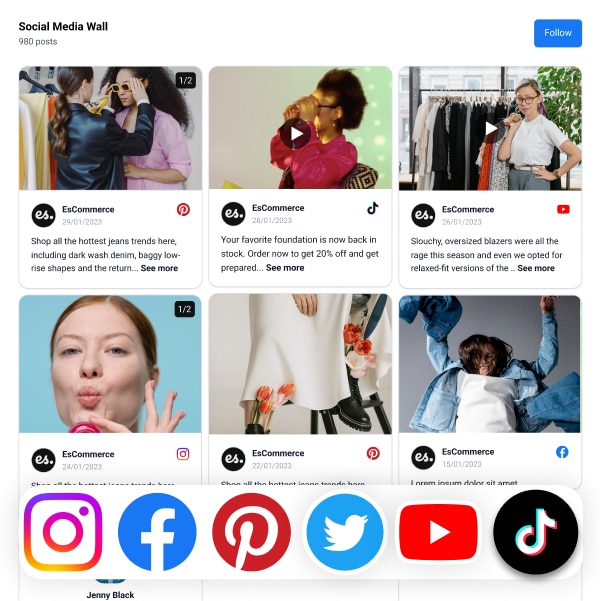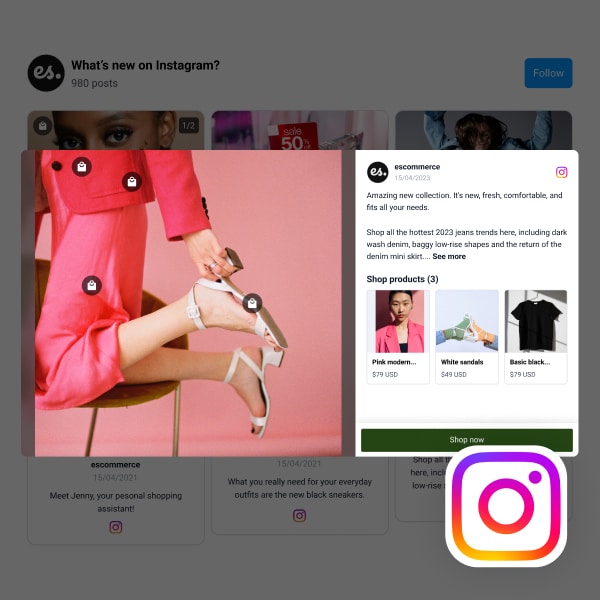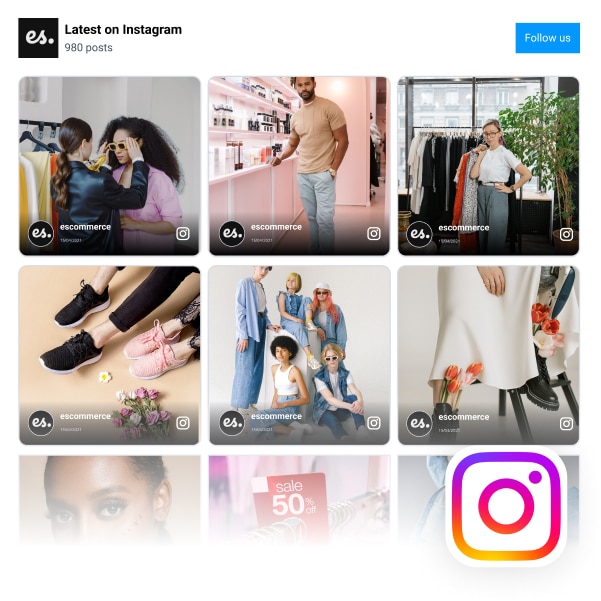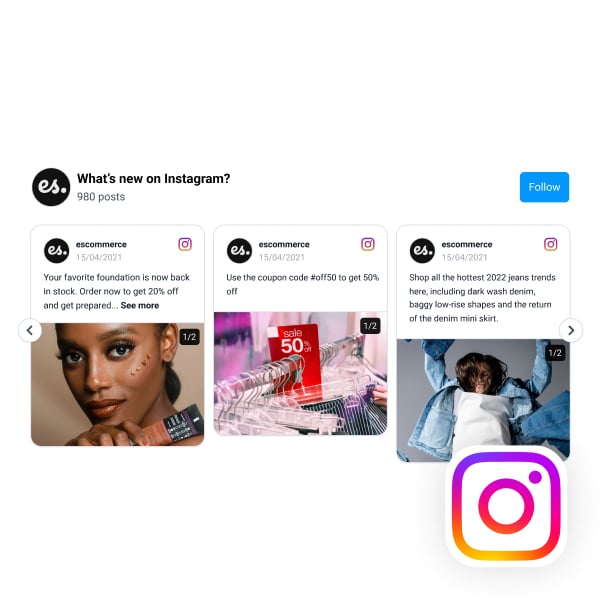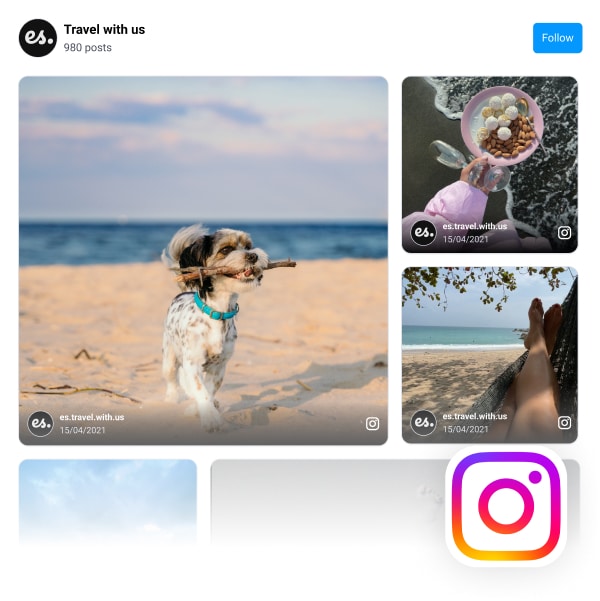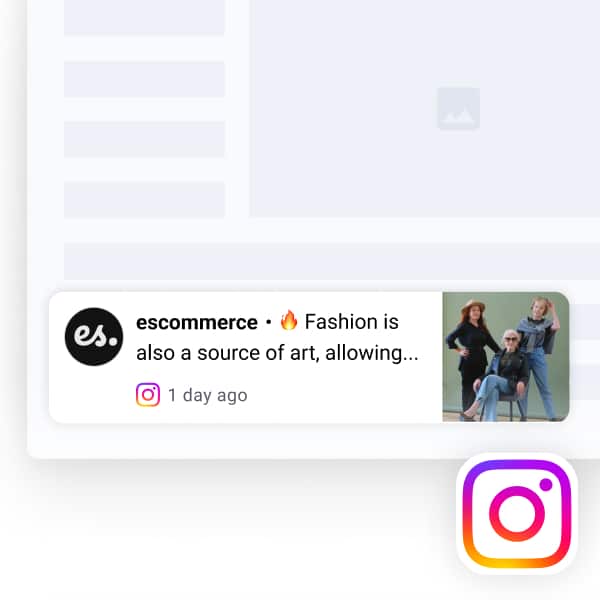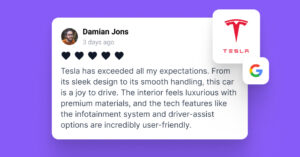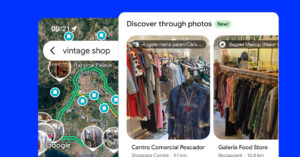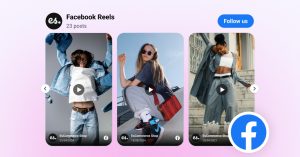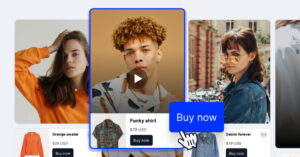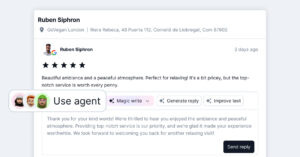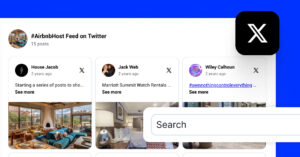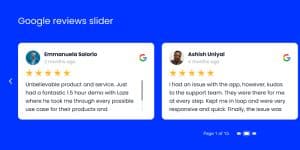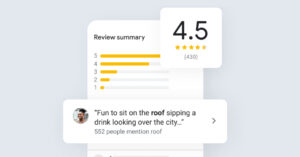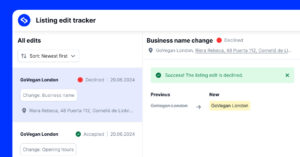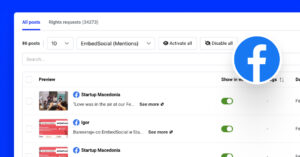User-generated content comes in many forms, all of which can be used to promote your business with engaging blog posts, product reviews, thrilling ads, and other marketing initiatives.
We show you several such UGC marketing campaigns below, and they all capture the public’s imagination, boost awareness for their brands, and help build valuable customer relationships.
Keep reading to see how you can get people talking about your company today!
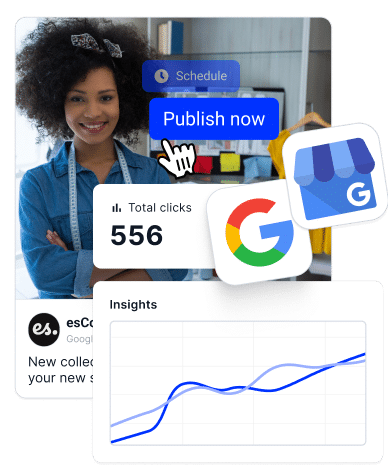
From UGC to OMG Sales!
Use our UGC software to easily gather, curate, and display authentic customers on your website, turning trust into sales.
What is a user-generated content campaign?
A user-generated content (UGC) campaign is a marketing strategy where brands encourage their customers, followers, or the general public to create and share content related to the brand or a specific theme or topic. This consumer-generated content can be photos, videos, testimonials, reviews, blog posts, tweets, or any other content shareable on digital platforms.
A successful UGC campaign combines strategic planning, genuine user engagement, and adaptability. By valuing and showcasing user contributions, brands can build stronger relationships with their audience and benefit from authentic endorsements. They drive sales, after all!
Why start a user-generated content campaign?
An ongoing strategy for aggregating and displaying user-generated content is necessary to build your brand long-term and provide social proof to build customer interest and trust. Once you use that UGC strategy in your marketing campaigns, you’ll also access a slew of other benefits:
- Increase engagement – User-generated content increases engagement on your website and social media pages since visitors are more likely to interact with and share content that they can relate to. Employee-generated content can encourage potential customers to stick around and interact with your brand.
- Boost sales – UGC can also be used to boost sales. For example, if you launch a contest where the prize is a discount on your products, you’re likely to see an increase in sales.
- Free marketing – User-generated content also constitutes free marketing. After all, when customers post about your brand, they give you free publicity, which boosts brand awareness and reach.
- Improve SEO – Your website SEO and online presence are also improved through UGC marketing campaigns since such content is fresh and relevant—the factor that search engines most use to rank websites. So, by encouraging customers to post UGC on your channels, you’ll get a nice bump in your site’s online visibility.
- Build brand trust – If you embed an Instagram feed with your customers’ posts on your website, you will instantly provide top-notch social proof. Experiences from other customers will make your new website visitors feel more confident about your brand, which can lead to improved conversions.
20 examples of brands with successful UGC campaigns
- 1. Coca Cola’s “Share a Coke” Campaign
- 2. Apple’s #ShotoniPhone Campaign
- 3. Starbucks’s #WhiteCupContest
- 4. Glossier’s UGC Instagram Hashtag Campaign
- 5. National Geographic’s #WanderlustContets
- 6. Calvin Klein’s #MyCalvins Campaign
- 7. GoPro’s Ongoing Hashtag Campaign
- 8. #AtTheMoxy Moxy Hotels Campaign
- 9. Netflix – Stranger Things 2
- 10. Adobe – The Art Maker Series
- 11. Chipotle – The Lid Flip Challenge
- 13. Spotify – Spotify Wrapped Campaign
- 14. Reddit – Maybe Together We’ll
- 15. Asos – #AsSeenOnMe
- 20. Airbnb – Sharing user experience on their Instagram feed
- 21. Poppi – leveraging UGC through influencer partnerships
1. Coca Cola’s “Share a Coke” Campaign
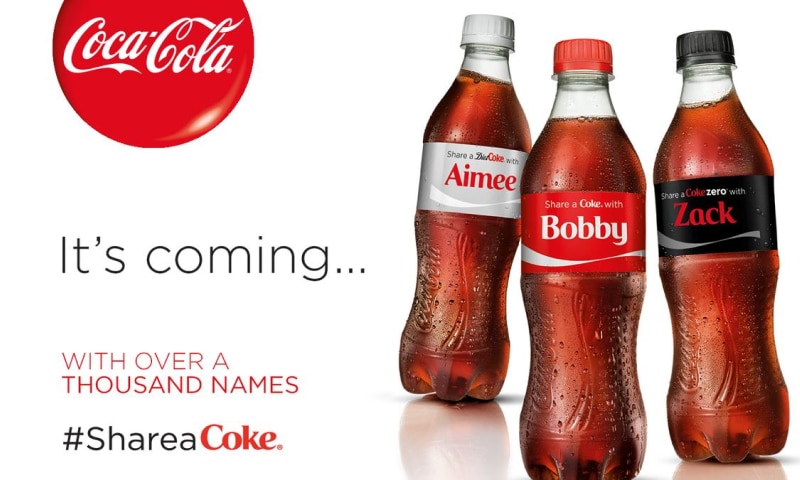
Do you remember the “Share a Coke” campaign? Coca-Cola had the most amazing UGC campaign of all time and possibly introduced UGC marketing into the mainstream.
Their marketing team came up with the idea in 2011 when they decided to print around 150 of Australia’s most common male and female names and put them on their bottles. The idea was to encourage people to share a Coke with their loved ones.
Why it works?
Because of the personalization and the ease of sharing on social media! People went crazy about this trend! Everybody bought personalized bottles, shot thousands of photos, and shared them on social media.
The idea was welcomed in 80 other countries worldwide, and people got really excited. Social media platforms were flooded with photos of people sharing a Coke with their own name.
2. Apple’s #ShotoniPhone Campaign

Remember when iPhone users were disappointed in the not-so-good quality of their cameras?
The company thought of an awesome way to make things right. Apple realized their customers were unsatisfied with the average camera capabilities of pictures in low lights, so they launched a campaign called “Shot on iPhone.” The company wanted to redeem the trust they lost and bring attention to what makes an iPhone special: its ability to take great photos.
Pro users were taking photos in low light with their iPhones, then posting them online for others to see, especially on YouTube with the “Shot on iPhone” tag, and later Apple featured the most interesting on their profiles as well.
Why it works?
Well, it’s Apple, and professional and unprofessional photographers wanted to get featured and recognized by Apple. Some used the opportunity to get more work and follow from interested clients.
3. Starbucks’s #WhiteCupContest
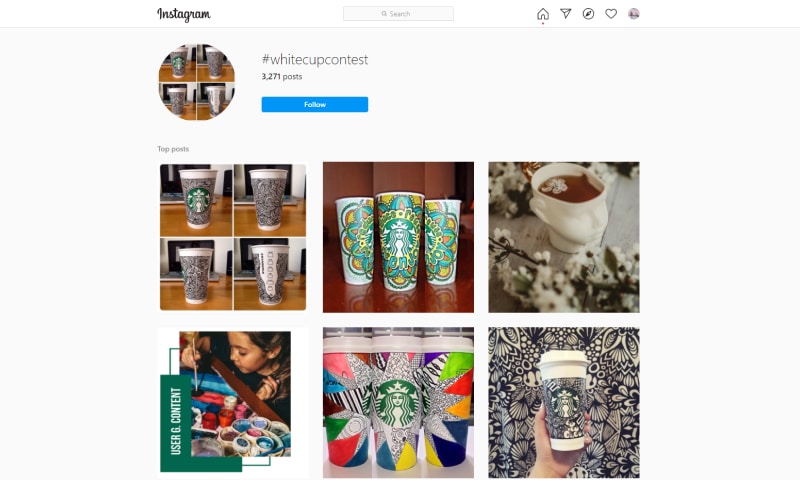
In 2014, Starbucks started a great campaign called #WhiteCupContest – it included a contest where customers were encouraged to draw something artistic and creative on their white cups. Of course, the winner will get special recognition, and their design will be printed on Starbucks’ new cups.
Why it works?
Anybody could participate, and it’s related directly to the customer’s favorite product they would love to share on social media. And, of course, the ability to win in a contest like this is a great incentive for young artists.
4. Glossier’s UGC Instagram Hashtag Campaign
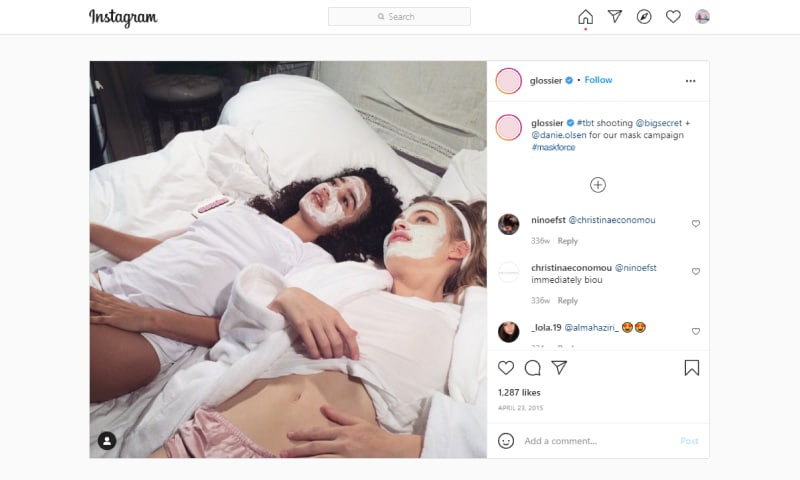
Glossier is a beauty brand that relies on customer-submitted imagery to get the word out. It regularly posts pictures of people using its products and heartwarming stories from customers who have fallen in love with the brand’s affordable skincare line. After all, Glossier gives them back the self-confidence they lost and brings out their inner beauty to the surface.
Instead of expensive model and product shots, the company focuses on user-submitted photos shared only one at a time across social media pages – an emerging trend for beauty brands.
When the brand launched its Mega Greens Galaxy masks, thousands of its consumers shared their photos wearing them and using the #MaskForce hashtag under the photos. Glossier reposted the photos, which caused even greater engagement among its users.
5. National Geographic’s #WanderlustContets
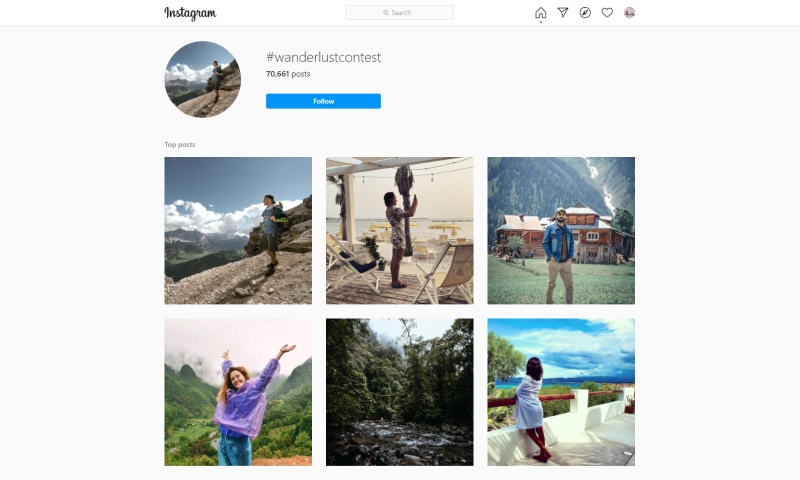
Even National Geographic created a powerful UGC campaign to gain followers and a high engagement rate. Best of all, they did it in a very original way.
Published under the hashtag #WanderlustContest, National Geographic promoted a healthy outdoor lifestyle by having users share their best nature shots.
The contest proved extremely popular, and the winner received an amazing 7-day trip for two adults exploring Yosemite National Park, which has some stunning views perfect for picturesque shots like the ones taken by the contest participants.
6. Calvin Klein’s #MyCalvins Campaign
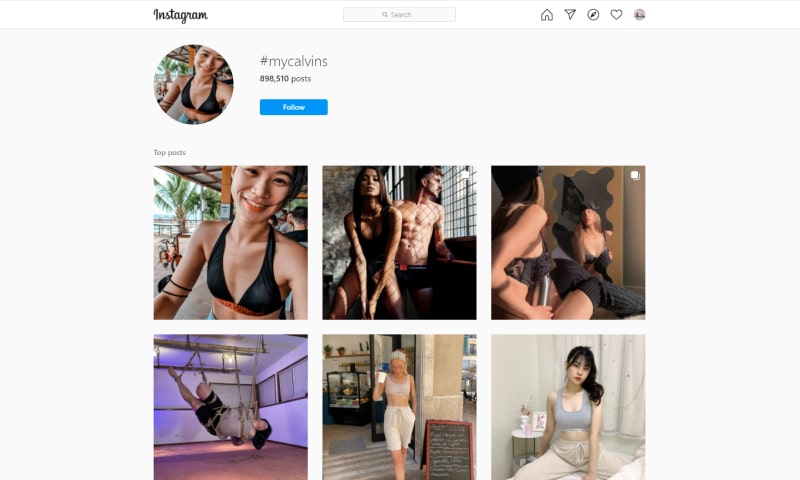
Creating user-generating content campaigns for fashion brands is one of the most effective marketing strategies around—it results in increased traffic, conversions, and ROI.
Fashion brands have quickly discovered these benefits and started using user-generated content to see a lift in conversion rates and reduced costs per acquired customer.
For instance, Brooke Shields uttered “Nothing Comes Between Me and My Calvins” in the 80s, making it possible for people worldwide to feel connected through their underwear.
Calvin Klein recently reused the tagline to come up with #MyCalvins—an Instagram contest inviting everyone to share photos of themselves wearing the brand’s products for an opportunity to be featured on Calvin Klein’s website gallery. Guess what? It went viral!
In just a few months, the hashtag #MyCalvins took over Instagram and boasted over 190,000 photos tagged by all kinds of UGC creators—both young and old!
In the end, this campaign connected more with the brand’s audience than any influencer post or paid ad ever could, thus gaining them millions of followers across most social media channels.
7. GoPro’s Ongoing Hashtag Campaign
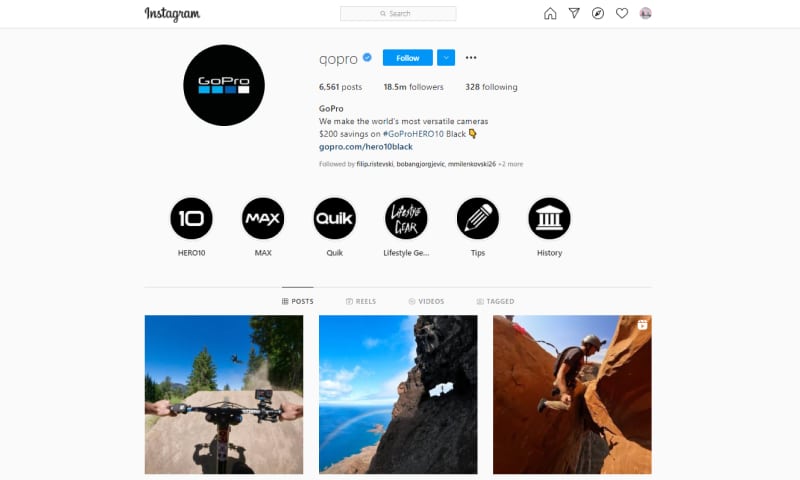
Did you know that the #GoPro hashtag has over 50 million posts? Apparently, people like sharing their own adventures and reading about other people and what they get up to!
This brand is a favorite among outdoor enthusiasts as it sells high-quality, durable cameras for those who want their thrilling outdoor lives filmed on camera – so naturally, many people are sharing gorgeous shots taken all across the world in all kinds of scenarios.
All this user-generated content points out exactly how GoPro enhances the way you capture images and videos from your explorations, thus helping convince potential customers to purchase their products and share their own creations with like-minded adventurers.
It makes you wanna have it, doesn’t it?!
8. #AtTheMoxy Moxy Hotels Campaign
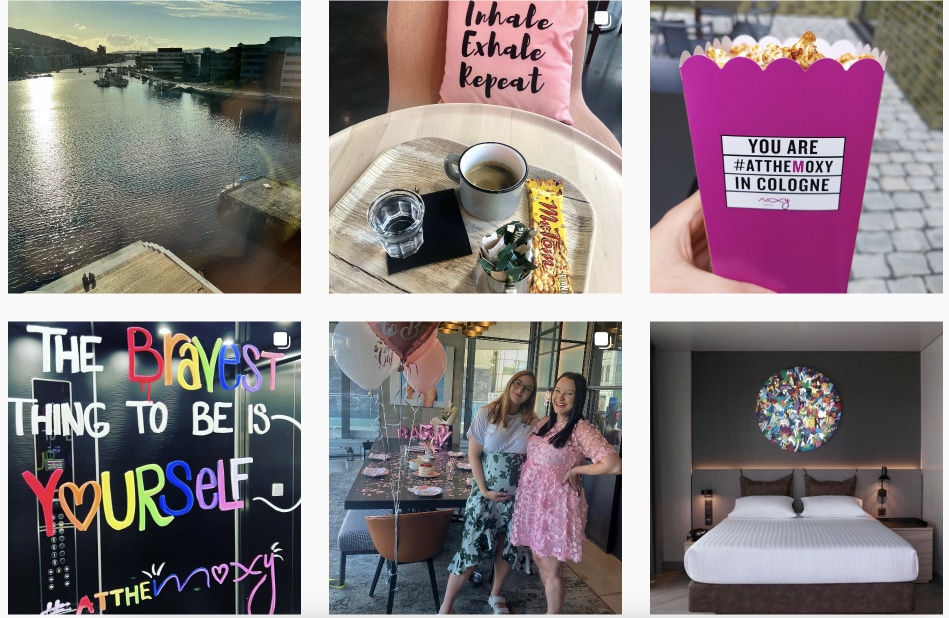
#AtTheMoxy is an ongoing Instagram campaign for Marriott International’s Moxy Hotels, and it has one goal: to promote the new brand by encouraging followers to post photos of themselves using this unique hashtag for a chance to be featured on the brand’s page.
The unique aspect of this campaign is the physical activation points spread across the hotel, like the elevators, toilet stickers to make selfies, TV screens with recent tags, and similar social media posts, all of which allow Moxy to connect with its audience and create brand-relevant content.
Why it works?
It stimulates young guests to have fun and share their experiences at this hotel, which resulted in more than 80,000 photos posted using the branded hashtag.
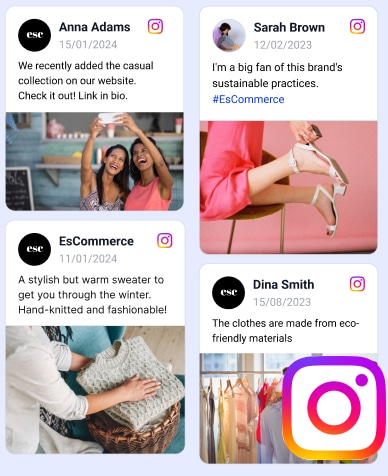
Embed Instagram feed on your website without lifting a finger!
Generate and embed Instagram widget with your feed, mentions, or hashtags directly to your website.
FYI: You can automatically embed an Instagram widget with a social media aggregator, bringing your website to life with fresh content.
9. Netflix – Stranger Things 2
How about an inspiring UGC campaign based on the hit Netflix series Stranger Things?
BFG Agency and Telescope promoted the second season of Stranger Things to increase fan interaction, and they chose to use uPic—an image uploader with filters and flare to build brand awareness—to allow fans to transform themselves into one of the show’s characters.
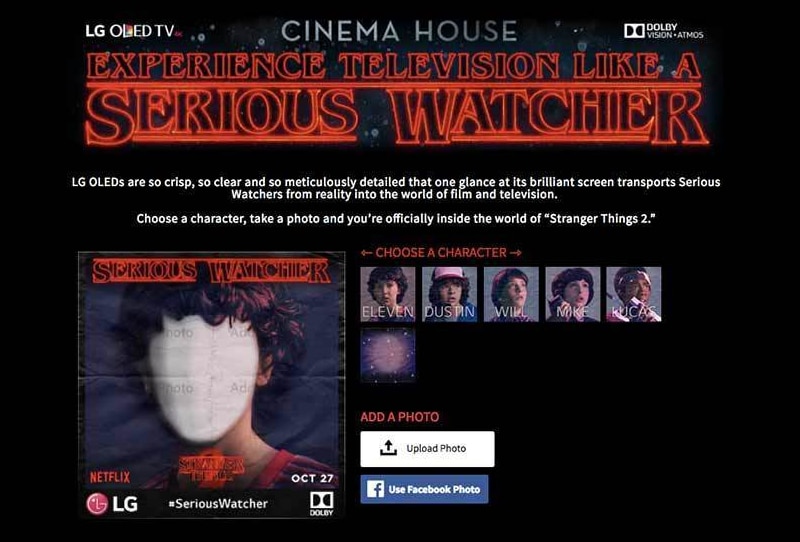
Are you a fan of the enigmatic Eleven or the down-to-earth Mike? No matter; you only had to provide a snapshot of your face, and you would have been transformed into either of them.
Moreover, you could scale, spin, and change the brightness to ensure the best fit and overall look match. Then, users were able to share their themed selfies to their social media accounts.
The images were also published in the show’s official gallery for other fans to see.
10. Adobe – The Art Maker Series
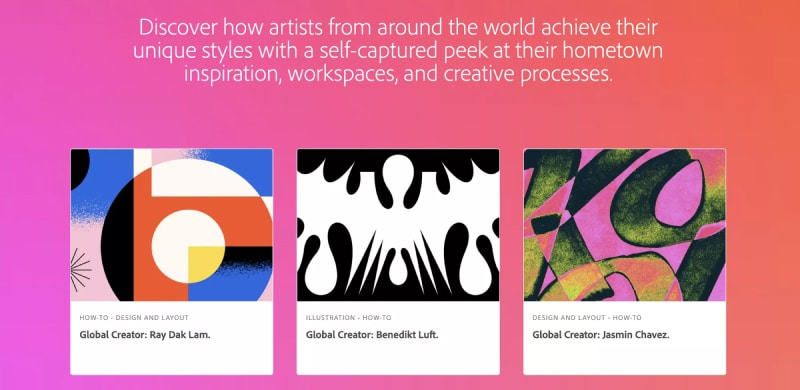
Adobe, the most popular provider of digital art software tools, had the brilliant idea to promote creative designers and artists through hashtags. Thus, they began the Art Maker Series. Here, Adobe invited creative designers to showcase their talents in quick-paced videos.
The main contest requirement: participants could only use Adobe’s suite of tools, such as Illustrator, Photoshop, etc. Moreover, only original artwork was accepted.
They also utilized the hashtag #AdobePerspective, which allowed selected designers to publish their original works and use those of other users, thus interacting with different creatives.
Why it works?
Users of Adobe were mostly inspired to interact with the brand and get featured on the Global Creators label. Ultimately, the company used the content as user suggestions, for product marketing, and to create all kinds of other endorsements.
11. Chipotle – The Lid Flip Challenge
Chipotle actively works on engaging young people through its app, as evident from the various social media campaigns it organizes to engage zoomers and millennials with its brand.
For instance, in collaboration with the Day One agency, Chipotle organized a challenge to drive interest in their app. Why? Forecasts showed that digital orders will skyrocket soon.
For the so-called Lid Flip Challenge, thousands of creators were asked to put their creative spin on a method for assembling burrito bowls, as shown by a real Chipotle employee.
They created the aforementioned hashtag contest together with David Dobrik, who, in addition to being one of the most popular internet celebrities, is a Chipotle superfan.
All you needed to participate was a phone and a mouthwatering Chipotle burrito bowl.
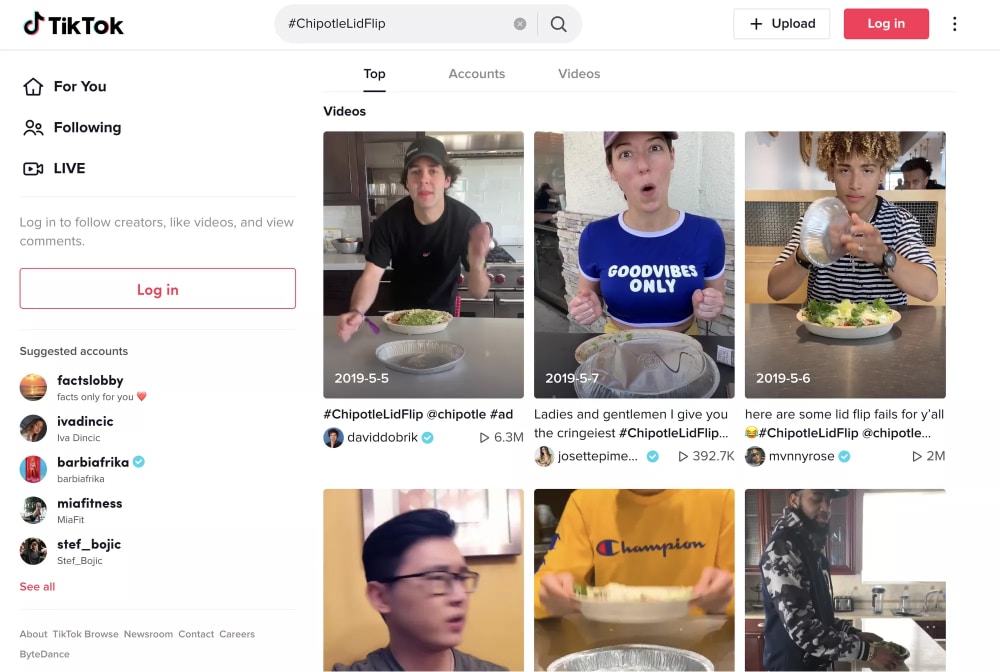
Over 111,000 videos were recorded in just the first six days, which resulted in a record-breaking online sales day, encouraging app downloads and online orders among Gen Zedders.
12. KFC – Chicken Sandwich
When KFC launched their new chicken sandwich, they wanted to expand their campaign to the larger community to generate demand memorably and entertainingly.
KFC already had an active and engaged TikTok fan base, which meant they had a good chance to create one of the most popular user-generated campaigns ever.
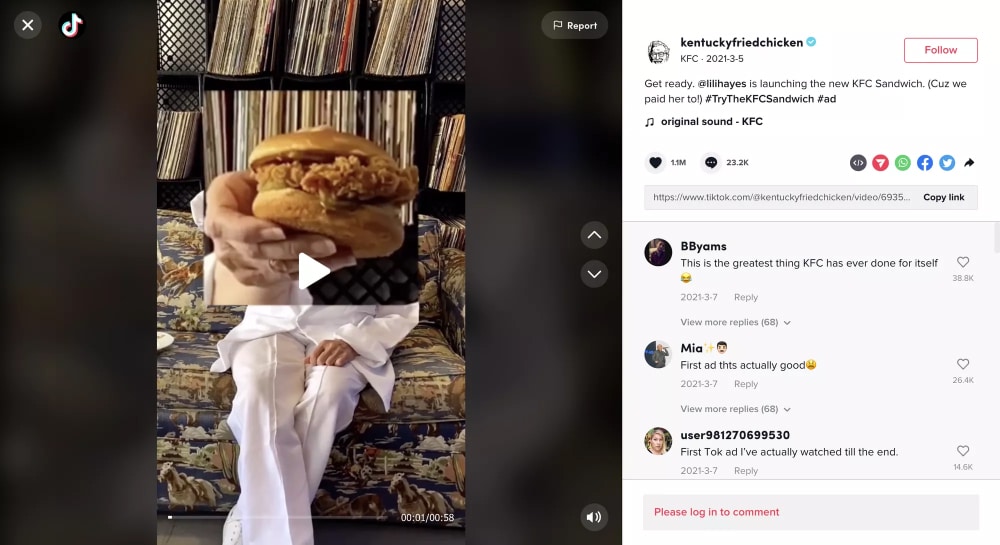
KFC sought to make a major impression to create widespread interest in and demand for their new chicken sandwich. They anchored the campaign with two TopView advertisements to make sure it had the most impact possible.
Note: the biggest marketing goal on TikTok is called TopView. It’s the opening video for the app. Therefore, it’s an excellent option for more critical launch events.
KFC collaborated with TikTok producers to bring their TopViews to life in a genuine way for their debut campaign in the US. The Internet’s favorite granny, Lili Hayes, was the face of the campaign. She was the star of KFC’s inaugural TopView, portraying Colonel Sanders and walking viewers through the scrumptious components and characteristics of the sandwich.
The brash 73-year-sardonic old’s charm was on full show. As she marketed the more prominent, crunchier, and better-than-ever KFC Chicken Sandwich to her following of 4.4 million, Lili also produced several TikToks.
Finally, the campaign had 221 million video views and a TopView CTR of 13.8%.
13. Spotify – Spotify Wrapped Campaign
At the end of 2023, Spotify used its famous ShopifyWrapped campaign to engage with users and stimulate them to share on social media. Each user gets a popup in the app with interesting stats about their listening history during the year. USers can see the #1 song or artist they listened.
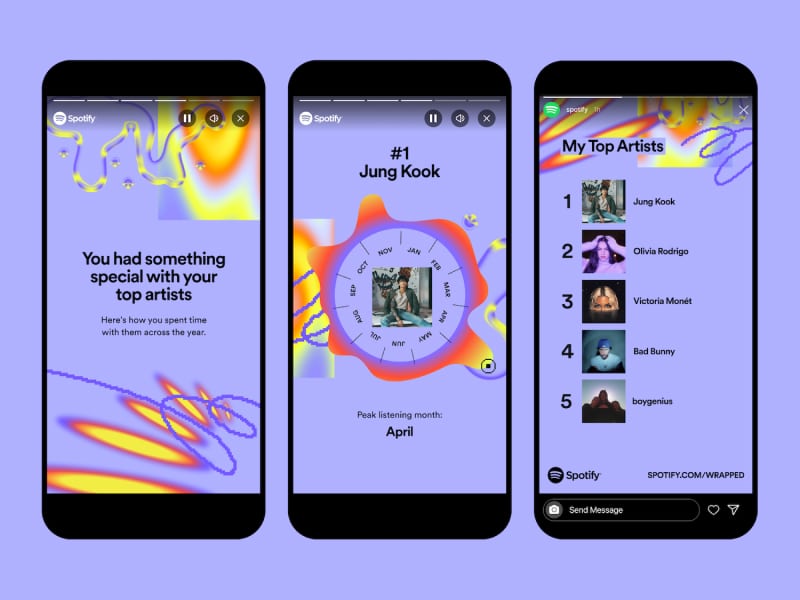
Why does it work?
It is a very well-designed campaign using screenshots. People love to take screenshots and share the music they listen to throughout the year. Making it that easy definitely works for any social media word-of-mouth campaign.
14. Reddit – Maybe Together We’ll
One of the largest social media networks opened a London-based office in 2020, and a year later, it tripled its advertising revenues and started its first consumer marketing campaign.
The Interpublic Group Agency R/hero GA’s advertisement is the centerpiece of this campaign. They showed the ad on YouTube, social media, television, and even subway stations.
The “Maybe Together We’ll” promo showcases Reddit’s most popular subreddit communities. It also contains a mosaic of images and videos posted by users worldwide.
The promotion conveys Reddit’s upbeat tone through its close-knit communities and demonstrates how effectively Reddit can resolve problems when “people join together.”
This is one of the user-generated content examples that undoubtedly significantly impacted the platform’s reputation, especially in light of earlier issues with user safety.
15. Asos – #AsSeenOnMe
Asos introduced the #AsSeenOnMe campaign in 2014, which asked customers who buy their clothing to post pictures on social media using the aforementioned hashtag.
Everyone benefitted from the campaign: UGC creators obtained social currency, consumers got the best social proof around, and ASOS successfully boosted its brand reach. After all, fun UGC campaign is more authentic in the eyes of up to 76% of the ASOS audience than traditional advertising.
Remember, consumers love bragging about their purchases and showing the rest of their audience what their favorite brands offer.
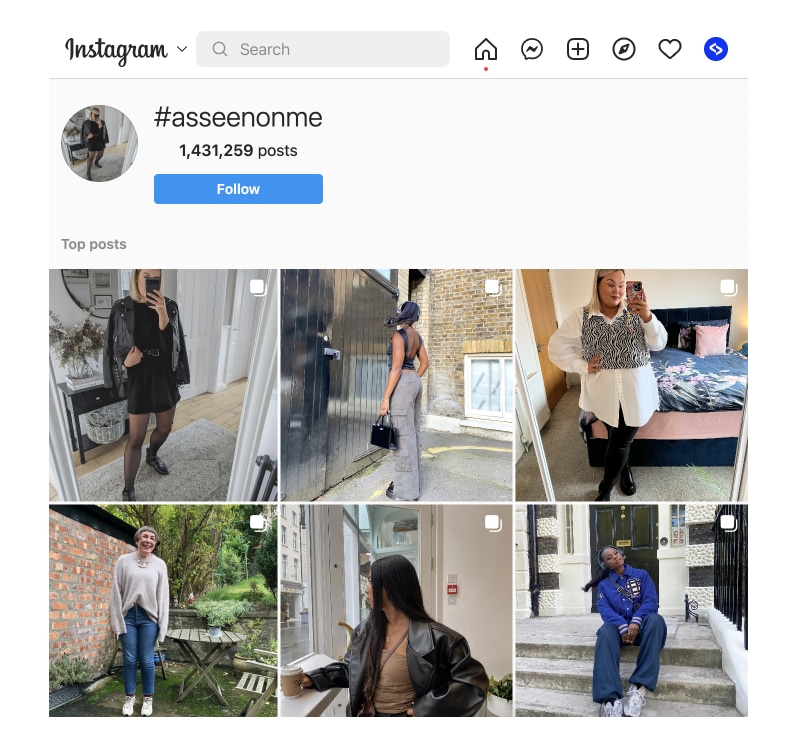
The brand saw improved penetration rates and increased sales. Also, its number of active consumers rose by an astonishing 25%, and the typical “shopping cart value” grew by 2%.
ASOS demonstrated that not every campaign requires a huge budget. Often, a straightforward, powerful concept may significantly alter the course of digital purchases.
16. CLUSE – #CLUSEwatches
In 2013, CLUSE was founded in Amsterdam to create elegant, simple timepieces for women. The group behind this popular company chose to portray CLUSE as a fashion brand rather than restricting it to just a standard watch brand.
Including social network information on their website was a strategy that CLUSE used to thank their consumers and boost engagement.
On Facebook, Instagram, and Twitter, the company invited consumers to post pictures and videos of their watches using the hashtags #CLUSE and #CLUSEwatches.
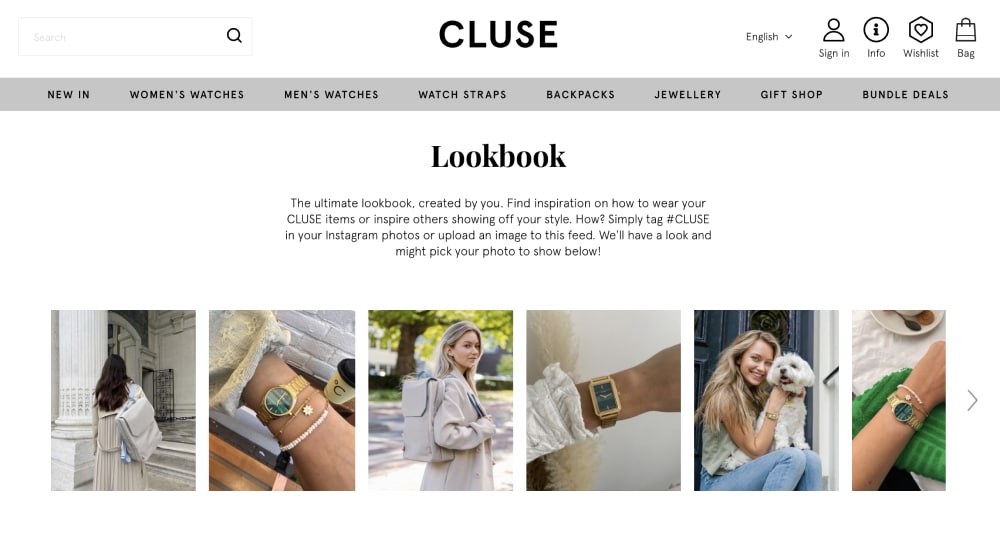
Photoslurp collected the hashtagged social media content and presented it as a Lookbook and a carousel on their product pages. Each image or video included a link to the watch’s product page and the social media profile of the person who posted it.
With this campaign, CLUSE got 19,000 photos and videos from their online community, and their conversion rates increased by 19%.
17. National Geographic – #YourShotPhotographer
In 2015, National Geographic invited photographers to submit photos of people, places, and nature. They received over 13,000 entries from amateur and professional photographers from around the globe.
With this competition, National Geographic displayed amazing creativity. For a while now, the brand has relied heavily on photography for its promotional campaigns. Each year, some of the top names in the business ask photographers worldwide to enter their photos.
Additionally, they have started a photography contest for kids in National Geographic Kids and organized a different event in National Geographic Traveler.
And finally, for people who want to have the opportunity to share their work and be featured on the National Geographic platforms, they can follow @NatGeoYourShot and tag photos with #YourShotPhotographer for a chance to be featured.
18. Citizens of Humanity – #WEAREALLHUMANITY
In Lóvua, a community in northern Angola where more than 13,000 refugees from the Democratic Republic of the Congo (DRC) presently reside, photographer Giles Duley first encountered Aunty Rose and Mimi. After violence broke out in the Kasai area of the DRC—one of the poorest sections in the country—they had to leave their homes.
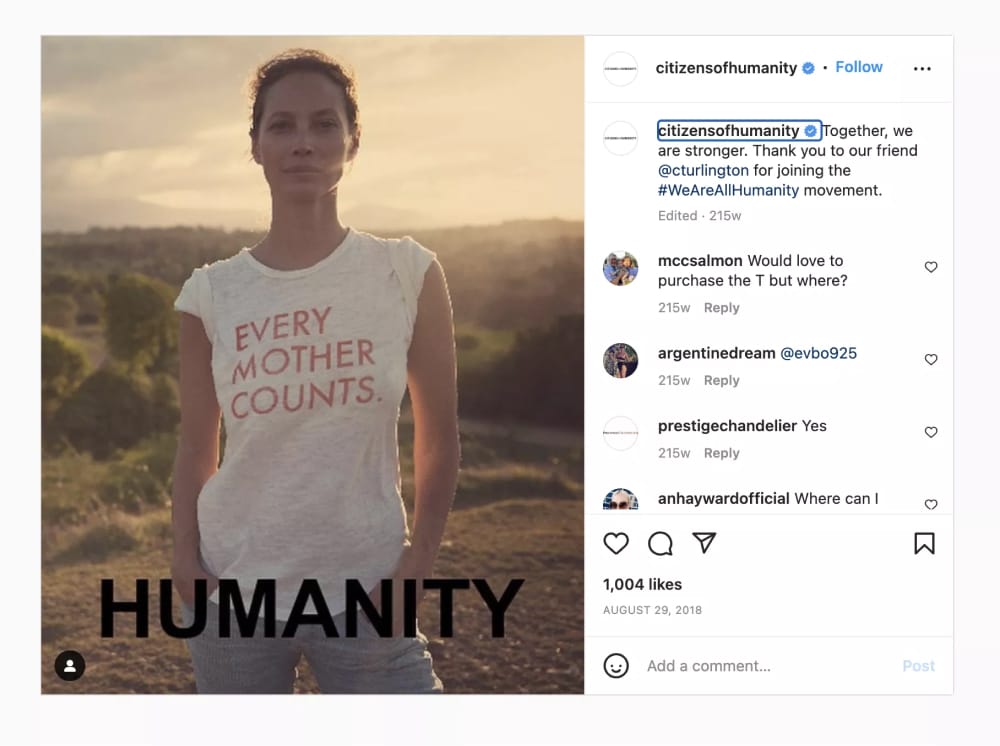
One of the editions of HUMANITY, a magazine by high-end denim brand Citizens of Humanity that emphasizes the commonalities and celebrates the differences that make up all of humanity, included a cover article about Duley’s meeting with the ladies of Lóvua. Citizens of Humanity aims to bring about change via the magazine’s content and community.
The hashtag had over 3,000 posts the first month after the campaign’s launch.
19. La Croix – UGC on social media
LaCroix Sparkling Water creatively uses any content created or produced by any of its fans. The brand’s distinctive esthetics include vivid colors, sunny scenes, and happy smiles.
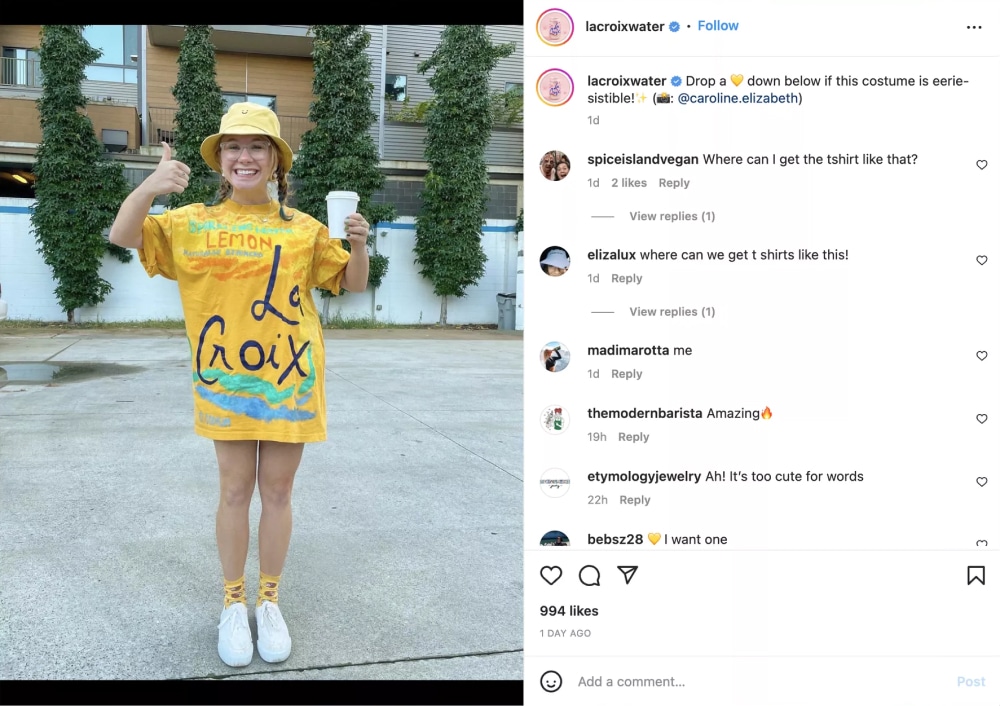
And what do they do to collect all that UGC?
La Croix gives away branded items and other goodies and makes interactive displays that interest people.
20. Airbnb – Sharing user experience on their Instagram feed
Airbnb probably has the most beautiful feed on Instagram. Their strategy is as simple as it can be – all they do is share photos of the homes offered on their platform.
Recently, they invited their followers to share their experiences using Airbnbs with their pets. Isn’t it epic that more than 3 million pets have visited Airbnb locations in the past year?
Why it works?
People love to share travel images, especially UGC creators and influencers. Exposure to their content on Airbnb profiles is huge for them, as it helps them gain more followers. This strategy has brought them over 5 million followers on Instagram.
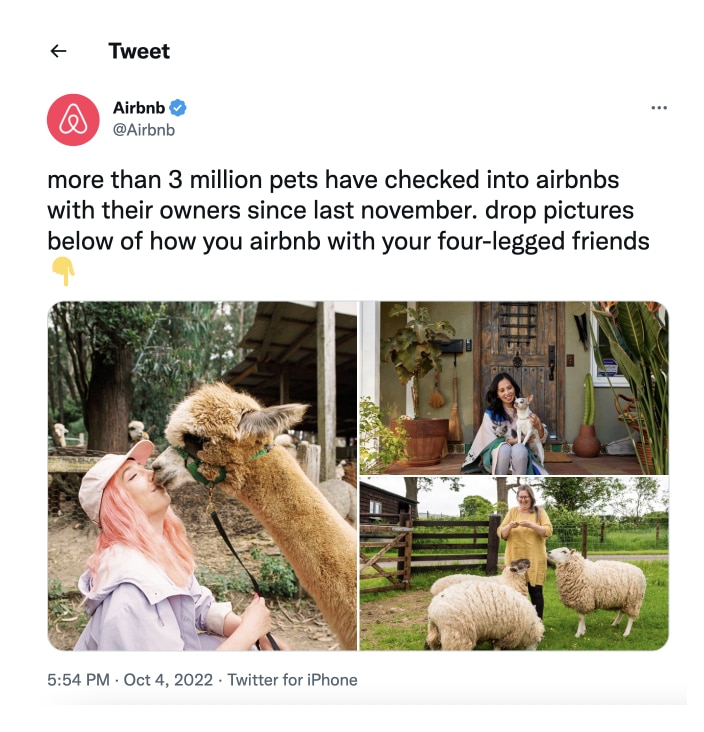
21. Poppi – leveraging UGC through influencer partnerships
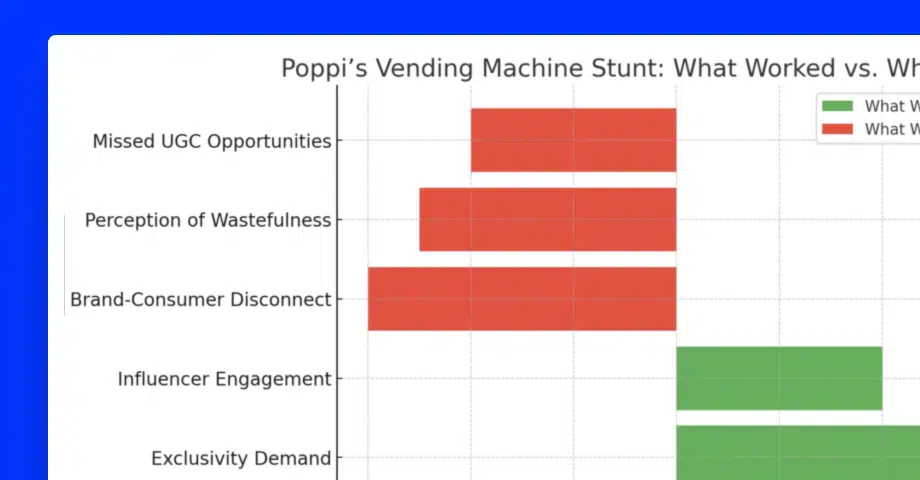
Poppi’s Super Bowl campaign serves as a compelling case study in the dynamics of user-generated content (UGC) marketing. The brand dispatched full-sized, branded vending machines stocked with their prebiotic sodas to 32 influencers across the U.S., aiming to generate buzz during the Super Bowl weekend. This initiative sparked a wave of content across platforms like TikTok and Instagram, with influencers sharing unboxing experiences and reactions. The campaign inspired most of the UGC to be created on the following platforms:
- TikTok: Influencers posted videos showcasing the vending machines, leading to widespread attention and discussions.
- Instagram: Visual content, including photos and stories, highlighted the vending machines and Poppi products, enhancing brand aesthetics and reach.
It strategically employed branded and trending hashtags to maximize reach and engagement:
- #Poppi
- #DrinkPoppi
- #SodasBack
- #PoppiMart
These hashtags facilitated the aggregation of UGC and amplified the campaign’s visibility.
While the campaign achieved significant visibility, it faced criticism for perceived extravagance, with suggestions that resources could have been allocated to more community-focused initiatives. In response, Poppi’s co-founder, Allison Ellsworth, addressed the backlash, emphasizing plans to involve the broader community through events and giveaways.
How to aggregate user-generated content?
With the growth of community-driven and marketing efforts, consumers are looking for more than just ads. They want to feel part of something authentic and meaningful by engaging with other humans on a deeper level through participation in activities outside traditional advertising.
User-generated content platforms like EmbedSocial help you automatically generate and display UGC in a well-crafted widget that you can use to embed on your website or in advertisements.
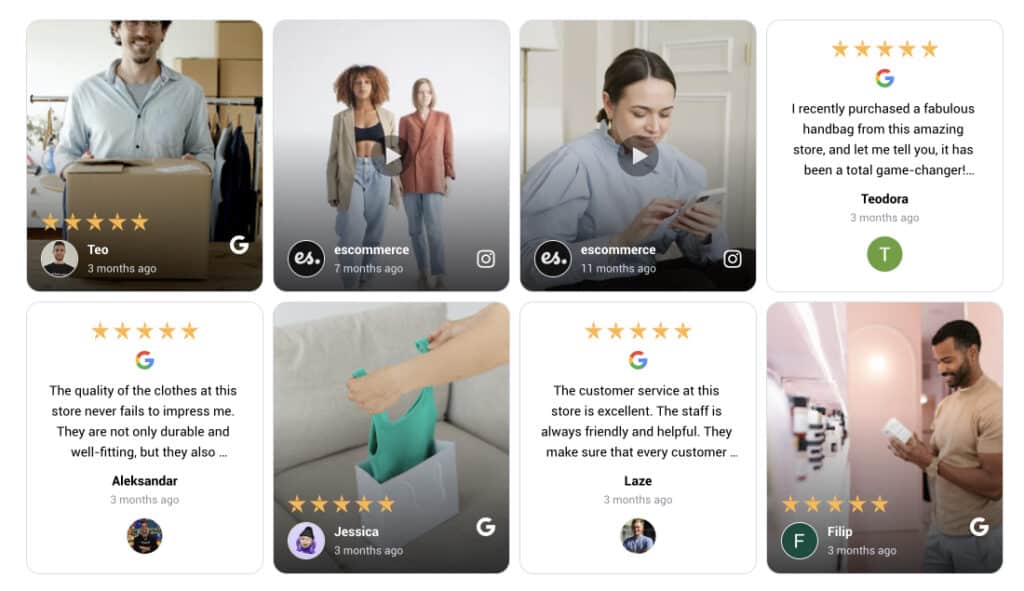
You only have to pick your favorite social media platforms and choose what to display – stories, albums, feeds, or reviews. Then, select the template you prefer and create a stunning widget.
Remember: you can generate even more sales by making your UGC widget shoppable, allowing people who have already purchased one of your products to find similar ones at no extra cost.
To get started, choose some of the following templates for Instagram widgets and create your next UGC campaign in seconds:
Want more Instagram feed widgets? Click below to explore more templates.
How to create a user-generated content campaign?
Creating a UGC campaign is often an involved process that includes multiple steps:
- Set clear objectives – decide what you aim to achieve: brand awareness, engagement, sales, or community building;
- Choose the right platform -determine where your target audience is most active: Instagram, TikTok, Facebook, Twitter, etc.;
- Establish guidelines – clearly communicate the type of content you’re seeking, any themes or prompts, and any rules or restrictions;
- Provide incentives – offer rewards, recognition, or deals to motivate participation;
- Promote the campaign – use your existing channels, such as social media, email newsletters, and website, to spread the word;
- Engage with participants – like, comment, share, and showcase user submissions to foster community and encourage more participation;
- Moderate submissions. -ensure content aligns with your brand values and guidelines. Filter out any inappropriate or off-brand content;
- Measure and analyze – track metrics like engagement rate, number of submissions, and conversion rate to assess the campaign’s success and gather insights;
- Encourage video- UGC videos are the most impactful content to use in your campaign!
- Generate and showcase the best content – use tools like UGC platforms to feature top submissions on your official channels, giving credit to creators, thus celebrating the community and amplifying the campaign’s reach;
- Thank participants – once the campaign concludes, thank everyone who participated, and share the results or highlights.
Remember, the key to a successful UGC campaign is authenticity. So, encourage your audience to submit genuine content, which will help you build a meaningful connection with them.
Elevate your UGC Campaigns with EmbedSocial
Take control of your user-generated content with powerful UGC platform designed to help you:
- Monitor UGC campaigns: Stay on top of what’s being shared about your brand across all platforms.
- Generate and analyze content: Easily gather, review, and analyze valuable UGC to fuel your marketing strategy.
- Create reports: Get detailed insights and reports to measure the impact of your campaigns.
- Embed social media feeds: Seamlessly display social content on your website in a dynamic, engaging feed.
Start maximizing your UGC potential today with EmbedSocial!
Key takeaways
- User-generated content campaigns greatly increase brand awareness and reach while improving your website’s SEO and reaching new customers around the world.
- Some examples of user-generated content include customer reviews, testimonials, social media posts, blog posts, and anything else consumers might create and publish online.
- Successful UGC campaigns, like the ones listed above, all manage to increase their brand’s awareness, engagement, and sales by being relevant, authentic, and creative.
- Marketers must complete several steps when planning a UGC campaign, including defining their goals, understanding their audience, and designing the campaign.
- For your UGC campaign, you can use social media aggregators to get the content shared via branded hashtags and create an Instagram wall on your website.
FAQs about UTC campaigns
What is an example of a successful UGC campaign?
Starbucks’s “White Cup Contest” is the perfect example of a successful UGC campaign that received thousands of entries and massive social media engagement. It promoted Starbucks as a brand and highlighted the creativity and talent of its customer base. Overall, the brand got an authentic promotion campaign generated, while users got a platform to showcase their creativity.
Can I legally use content shared by my customers?
Always request permission before reposting. Tools like EmbedSocial can automate rights management by requesting and storing consent.
What is the best type of UGC?
The effectiveness of your UGC marketing strategy depends on your campaign’s goals, the target audience, and the platform you use. That said, reviews, testimonials, and visual content (photos and videos) are always engaging and effective in capturing the public’s interest across all channels.
What are some UGC niches?
UGC can be found across a wide range of niches, each with its own unique characteristics and communities. That said, the top three niches to look for or create UGC for include beauty and makeup, fashion, and fitness and health, all of which are perfect for such content.
How can I encourage customers to create UGC?
Encourage UGC by creating branded hashtags, hosting contests or challenges, featuring user content on your official channels, and offering incentives like discounts or recognition. Clear calls-to-action and easy submission processes also boost participation.
Is user-generated content more effective than influencer marketing?
UGC often provides more authenticity than influencer marketing, as it comes from genuine customer experiences. While both have their merits, UGC can be more relatable and trustworthy to potential customers.
